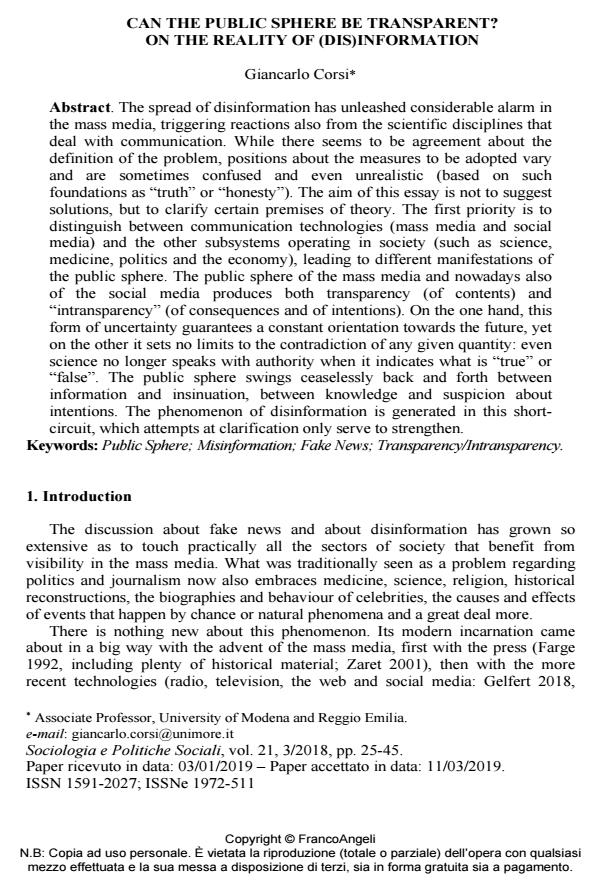Can the public sphere be transparent? On the reality of (dis)information
Titolo Rivista SOCIOLOGIA E POLITICHE SOCIALI
Autori/Curatori Giancarlo Corsi
Anno di pubblicazione 2019 Fascicolo 2018/3
Lingua Inglese Numero pagine 21 P. 25-45 Dimensione file 233 KB
DOI 10.3280/SP2018-003003
Il DOI è il codice a barre della proprietà intellettuale: per saperne di più
clicca qui
Qui sotto puoi vedere in anteprima la prima pagina di questo articolo.
Se questo articolo ti interessa, lo puoi acquistare (e scaricare in formato pdf) seguendo le facili indicazioni per acquistare il download credit. Acquista Download Credits per scaricare questo Articolo in formato PDF

FrancoAngeli è membro della Publishers International Linking Association, Inc (PILA)associazione indipendente e non profit per facilitare (attraverso i servizi tecnologici implementati da CrossRef.org) l’accesso degli studiosi ai contenuti digitali nelle pubblicazioni professionali e scientifiche
The spread of disinformation has unleashed considerable alarm in the mass media, triggering reactions also from the scientific disciplines that deal with communication. While there seems to be agreement about the definition of the problem, positions about the measures to be adopted vary and are sometimes confused and even unrealistic (based on such foundations as "truth" or "honesty"). The aim of this essay is not to suggest solutions, but to clarify certain premises of theory. The first priority is to distinguish between communication technologies (mass media and social media) and the other subsystems operating in society (such as science, medicine, politics and the economy), leading to different manifestations of the public sphere. The public sphere of the mass media and nowadays also of the social media produces both transparency (of contents) and "intransparency" (of consequences and of intentions). On the one hand, this form of uncertainty guarantees a constant orientation towards the future, yet on the other it sets no limits to the contradiction of any given quantity: even science no longer speaks with authority when it indicates what is "true" or "false". The public sphere swings ceaselessly back and forth between information and insinuation, between knowledge and suspicion about intentions. The phenomenon of disinformation is generated in this short-circuit, which attempts at clarification only serve to strengthen.
Parole chiave:Public Sphere; Misinformation; Fake News; Transparency/Intransparency.
Giancarlo Corsi, Can the public sphere be transparent? On the reality of (dis)information in "SOCIOLOGIA E POLITICHE SOCIALI" 3/2018, pp 25-45, DOI: 10.3280/SP2018-003003